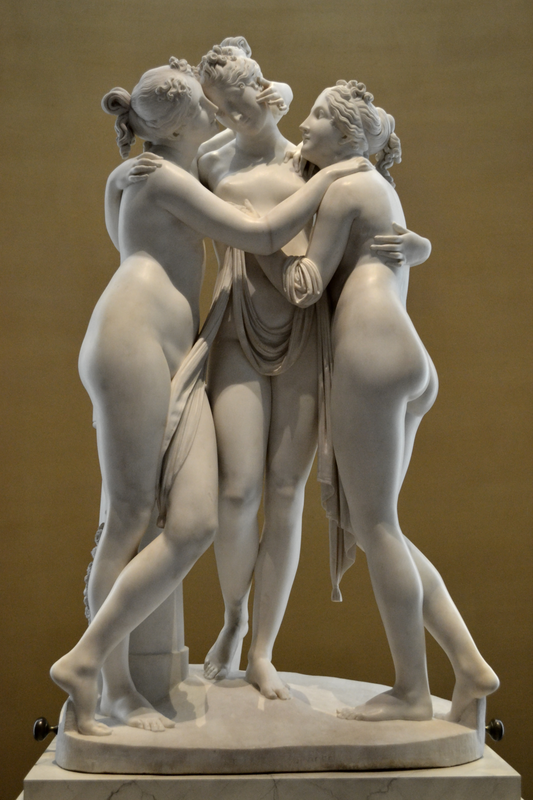More about The Three Graces

Sr. Contributor
This statue by Antonio Canova represents one of the longest continuously running games of keep-away in world history.
John Russell, 6th duke of Bedford, got to Rome with a mission. He marched over to Canova's shop to purchase a statue the sculptor had crafted for Empress Josephine while in service to Napoleon's court. The statue was a group hug among three of Jupiter's daughters in their birthday suits. The duke could look, but he couldn't touch unless he wanted to start some drama. Josephine had recently died and her son called dibs on the triplets before Russell could get an offer in for the work. Canova offered to make a new version for the duke. Five years later, it was installed at Woburn Abbey in Bedfordshire, under the supervision of Canova himself.
Fast forward 164 years to 1983 and the duke's family isn't doing so well. One of the duke's heirs, the Marquess of Tavistock, offered the statue to the National Trust for just £1.2 million. They didn't get the big deal and passed. Eager to unload the bosom buddies bust, Tavistock basically gave the statue away in 1984 to an art investment firm based out of the Cayman Islands. Finally, after years of nothing, and with the statue sealed up in a crate near South London, the investors got a $12.3 million bite in 1989 from the Getty Museum in Malibu. Suddenly realizing what the UK's about to lose, the British government stalls the Getty's application to export Three Graces so a British museum might put up the money.
Just as a coalition of museums was about to lose their chance at keeping Three Graces, the single unlikeliest aid came the constitutional monarchy's way. J. Paul Getty II himself put up the money to bridge the funds. He said it was a gesture of goodwill toward his British friends and neighbors, as he lived in London at the time. British tabloids, however, claimed the maneuver was meant to irk his family by screwing up the contentious statue's purchase by their namesake museum. Getty II wasn't a fan of the insinuations, acting like he'd pull out the funding altogether in response. But he was all talk. The money came through and the deal went forward.

Contributor
The three graces are Greek goddesses named (from youngest to oldest): Aglaea ("Splendor"), Euphrosyne ("Mirth"), and Thalia ("Good Cheer"). As was customary in the days of Greek goddesses, they conducted most of their official goddess business in the nude. They also apparently really liked each other a lot, and thought it was ok to get all cozy in public and in ways we might consider somewhat erotic.
Canova made two of these amazing pieces. The first version was made of veined marble for Napoleon's wife, the empress Josephine. A visiting British Duke saw it, turned to Canova, and said "Excuse me, I dare say, jolly good show old chap, may I be so bold as to inquire at what price I might possibly acquire this marvelous piece?" When he was told it was not for sale, he commissioned his own version in white marble.
The white marble English version is now located at the Victoria and Albert Museum in London, England, and the veined marble version is now in the Hermitage Museum in St. Petersburg, Russia.
For those who like a little more meat on their Graces, you might like the more colorful and full figured The Three Graces by Rubens.














